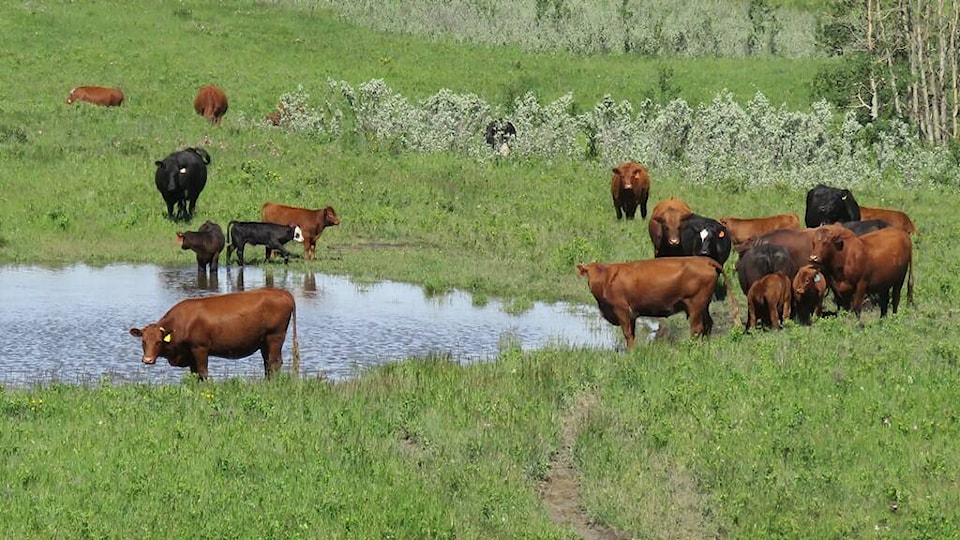The hay shortage caused by drought and wildfires in the province has hit an all time high, leaving farmers with irredeemable choices.
Farmers and ranchers are selling off their cattle, including mature cows, says Mike Pritchard, manager of the BC Livestock Producers cooperative in Vanderhoof and president of the Nechako Valley Regional Cattlemens Association.
In July when cattle farmers first sounded the alarm for hay-shortage, the provincial government and BC Cattlemen’s Association announced they would help them source hay and feed.
READ MORE: Drought causes havoc for Burns Lake ranchers
However, that did not work for people in the Highway 16 corridor, said Pritchard, adding that the closest match they found was in northwestern US, making it an expensive alternative ($500 per tonne) due to transportation costs.
“People are selling cattle because there isn’t enough to feed them…So that’s why we’re seeing a big uptick in sales of cattle right now,” Pritchard said.
“We’re a full 30 days early on selling them because there is no grass for pasture or hay to feed them.”
As of last week, the cattle brought in for sale hit a record high of 11,000 compared to the average total of 5,200 brought in last year. While the numbers indicate booming business for sellers, Pritchard says that the sale of mature cows is going to set back the cattle industry in the Highway 16 corridor for the next two to three years.
Every year an aggregate of 1,000 mature animals come through for slaughter, this year, so far, the number is at 3,000 – a significant uptick.
“The slaughter cows that we’re seeing here are the mother cows, that’s basically the bank account for all the producers. So if they get rid of them [cows], there will be no calves left next year.”
“So what that does is it basically changes the cattle industry along this Highway 16 corridor and it will affect agribusiness, co-ops and anything that sort of goes back to the agriculture peice because that cow herd will be less.”
Farming and ranching operations along the northwest corridor is a multi-million dollar industry which is going to see fewer cattle in the years to come and it will take some time to rebuild. In the Nechako Valley, the beef industry is the second largest after forestry with nearly $40 million in sales.
Pritchard worries that many of the farmers and ranchers will choose to quit due to high interest rates.
“With high interest rates for these cattle farmers to come back in some people are going to throw the towel in and say I’m done with this cattle business,” he explained.
Pritchard says the BC Cattlemen’s Association is lobbying the government for a three-year tax deferral for farmers and ranchers.
The original offer was a one-year tax deferral but that will not be sufficient for producers to be able to regenerate their pastures and hay fields, he said.
“If you force everybody back into the market in the next calendar year… the price of those animals goes way higher because you have all this demand everybody is trying to get this cattle back,” Pritchard said.
